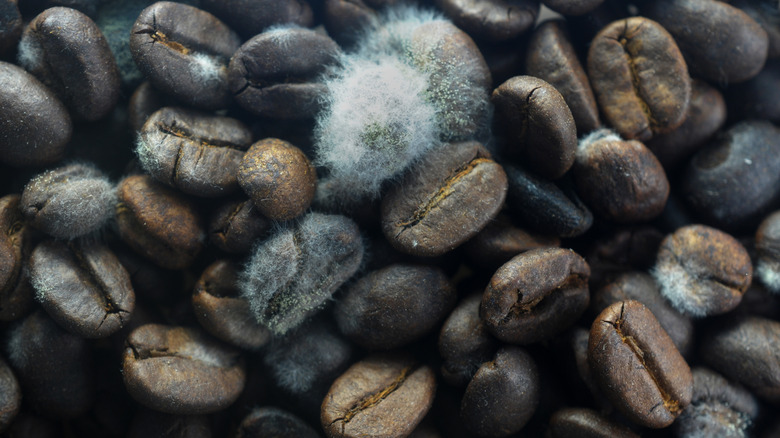Is Nespresso's Coffee Mold-Free?
Do you know that 45% of commercial coffee contains Ochratoxin A? The mycotoxin is released by mold and is both carcinogenic and immunotoxic. Choosing mold-free beans is about staying safe; however, Healthline is keen to stress that the amount consumed from coffee is likely to be within safe levels. So, where exactly do you stand with Nespresso? In theory, Nespresso's coffee should be mold-free, as it uses hermetically sealed aluminum capsules to ensure long-lasting freshness. Hermetic sealing involves creating an air-tight environment — removing oxygen, which is a necessary presence for mold. It additionally prevents exposure to humidity, a famous catalyst for rapid mold growth.
While we can't guarantee Nespresso coffee is mold-free (the website is vague around specific mycotoxin-preventing processes), the sealing process is a big green flag. The whole journey of a coffee bean has multiple opportunities for a sneaky spore or two to develop, though, from cherry growth to drying and roasting. It can even be present in the soil at coffee farms, which is why a close relationship with producers is a must for coffee bean companies. Be mindful of your own potential hiccups too; ensure you know what to do if there's mold in your Nespresso machine and learn how long you can store ground coffee before it starts to go stale.
How to tell coffee has grown mold
Whether analyzing Nespresso or any other brand's beans, it's a good idea to be able to distinguish between healthy and moldy coffee. After all, it could cause immediate damage when consumed, including headaches, irritability, dizziness, gastrointestinal troubles, and heightened anxiety. And that's all without factoring in long-term impacts like carcinogenic mycotoxins. Of course, the easiest way to spot moldy coffee is by closely checking the beans for fuzzy spore growth. These can appear as white, black, and even green patches.
But, since mold can be microscopic at early stages, what if it's too small to see with the naked eye? Unusual tastes or textures may be warning sirens. Undetected growths could be one of the reasons your freshly brewed coffee tastes bad, carrying a musty rather than vibrant flavor.
Of course, ideally you want to prevent coming into contact with moldy coffee entirely, not just become adept at detecting it via taste buds. To go one step further, check for mycotoxin labels on your coffee labels; these act as certification that the product will be mold-free. You could also proactively soak beans in a mixture of two parts water, one part vinegar — destroying any spores before rinsing them ready for consumption. But that may also affect the taste of your coffee.

